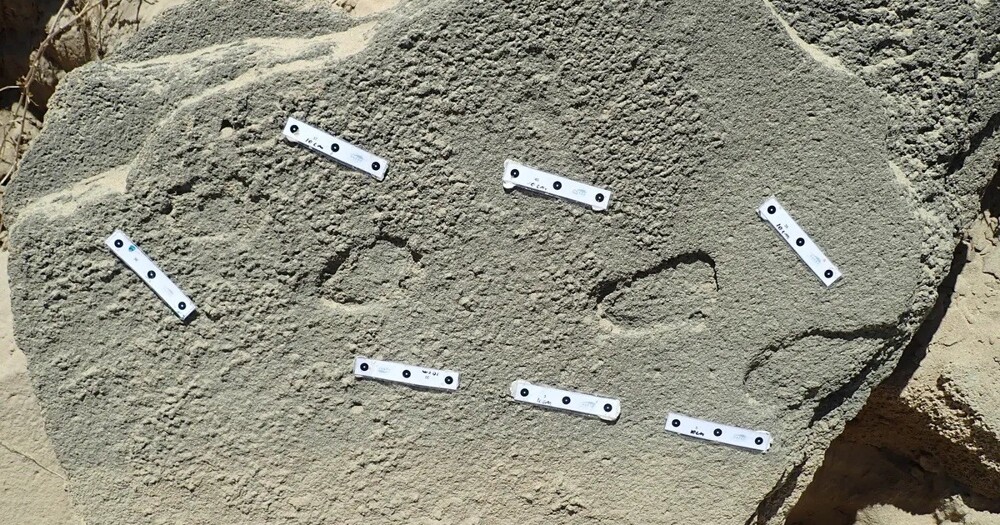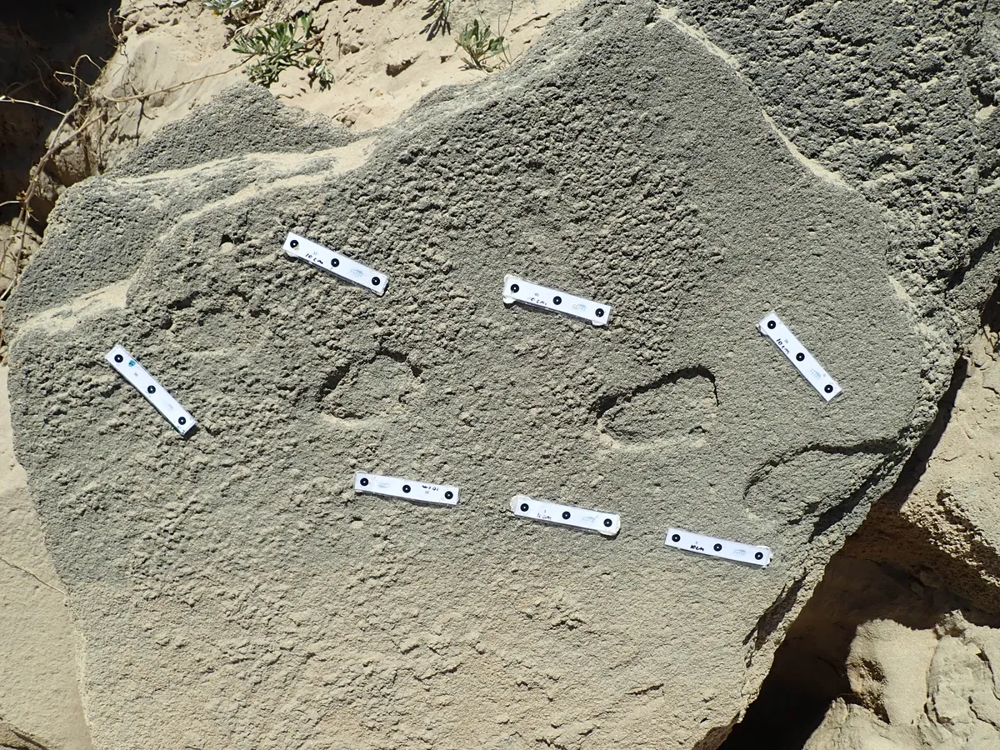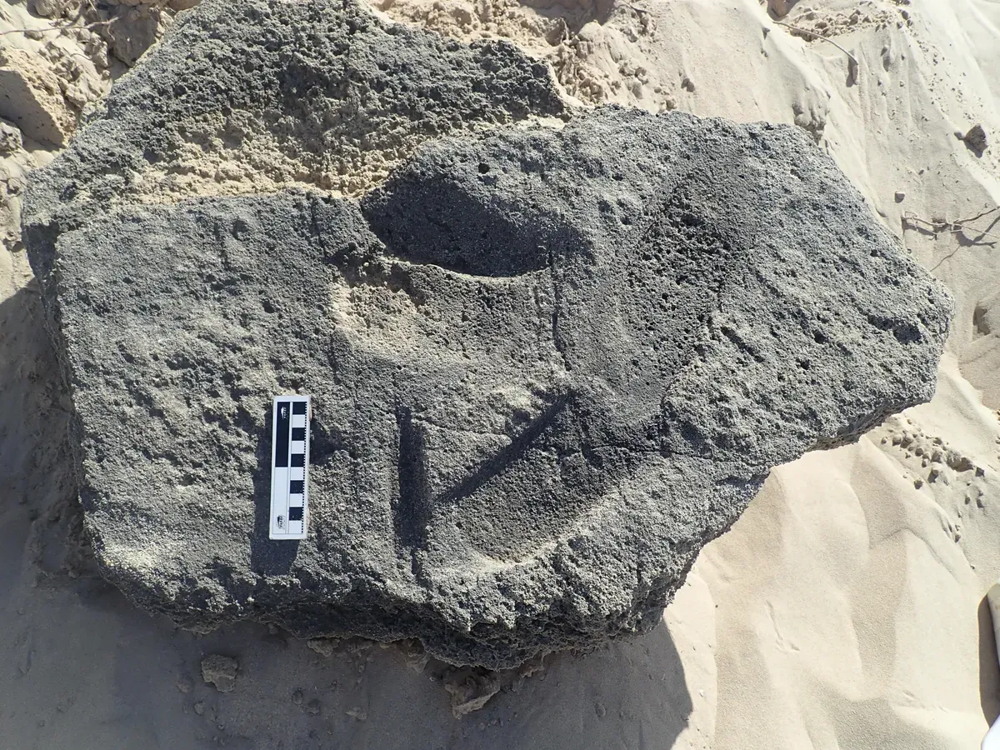Ancient footprints may be evidence that people wore shoes 148,000 years ago (3 photos)
Footprint analysis in South Africa suggests that people in the Mesolithic era wore sandals with hard soles. Age traces discovered at Kleinkranz may range from 79,000 to 148,000 years, based on the age of nearby rocks. 
There are no fingers on the prints, which allows them to be distinguished from traces of bare feet, instead they have a rounded toe, clear edges and possible imprints of belt fastenings. Similar traces left 73 - 136 thousand years ago were discovered in the town Goukamma. 
The study authors write: “The footprints belong to small-sized adult hominids.”
To test the hypothesis, scientists created copies of ancient sandals the indigenous African people San and repeated prints. Experiments showed that shoes with hard soles leave a mark on wet sand with clear edges, no toe marks and with indentations in places contact of leather straps with the sole - exactly the same as in Kleinkranz. Hominids were engaged in coastal fishing, climbed on sharp stones and could step on sea urchins, so their feet needed protection.
"In the Mesolithic era, a laceration on the leg could lead to death a verdict, say scientists. - In this case, sandals would just be salvation." 
Despite promising results, researchers are afraid make bold statements. This is due to a number of factors, such as difficulty in interpreting prints, as well as with what was not found not a single example of Middle Stone Age shoes.























